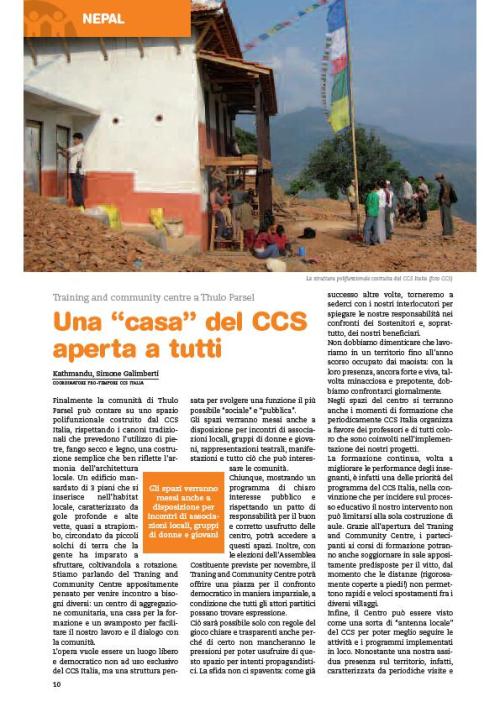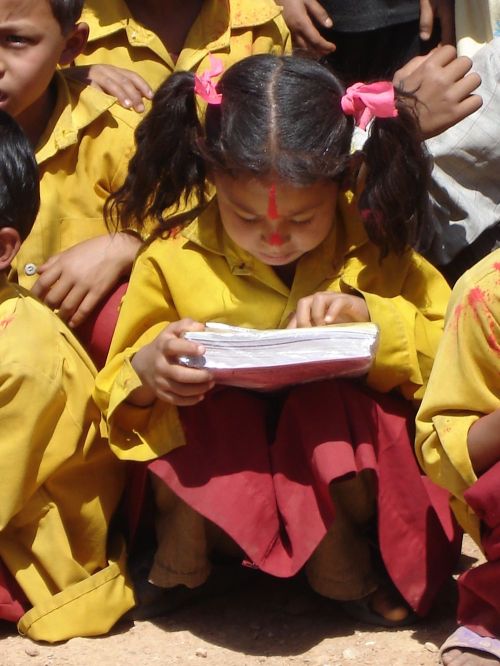 Some past posts criticized the work and the role of some INGO operating in Nepal. we receive this article on the matter from Syed Mohammad Ali, Pakistani Researcher
Some past posts criticized the work and the role of some INGO operating in Nepal. we receive this article on the matter from Syed Mohammad Ali, Pakistani Researcher
Engaging in a debate about the role of NGOs should not be confined to questioning their credibility, but also their ability to deliver services efficiently and in a sustained manner
A landmark Paris Declaration on Aid Effectiveness was put forth in 2005 which acknowledged that international development aid needs to respect the priorities of recipient countries and that donor organisations must begin to coordinate their activities with one another. In development terms, this understanding implied the need for donor alignment to improve the harmonisation of aid.
Three years have passed since this declaration was signed, yet the overall ineffectiveness of development assistance continues to evoke much criticism. International non-governmental organisations perhaps remain the harshest critics of aid effectiveness. But what about the effectiveness of these NGOs in utilising aid for development purposes themselves?
After all, international NGOs receive large shares of aid from donors, which adds to the funding generated by them privately and amounts to a significant sum. In some donor countries, the share of NGOs in the expenditure of official development aid is as high as 20 percent. The aid granted by NGOs from OECD nations alone amounted to a total of to almost $15 billion in 2005. A similar amount was given to them in 2006.
Some of the larger NGOs now have budgets bigger than longstanding government donors. The overall budget of ‘World Vision International’, for example, exceeds the aid budget of Italy. The ‘Save the Children Alliance’ spends more money on development than Finland.
Given the enormity of funds involved, a closer look is needed over how NGOs are spending this money meant to assist developing countries. Some recent research in this regard indicates that there is due basis for concern.
Generally, international NGOs are considered to be able to target aid more effectively than state-run development agencies. This confidence is based on the assumption that such entities are more aware of the needs of poor people – since most of them directly cooperate with local level civil society groups, enabling them to circumvent corrupt governments. It is also claimed that international NGOs are less influenced by donor governments’ commercial and political interests, and more responsive to on-ground needs.
However a look at cumulative NGO activities indicates that like official donors, international NGOs are also very subjective in where they chose to spend their money. Ethiopia, for example, has been found to host 5 separate affiliates of World Vision, 7 Oxfam agencies, 6 Care International and 12 Save the Children offices.
Similarly, in other relatively small countries such as Guatemala, Sri Lanka and Zimbabwe, more than 40 of the 60 largest NGOs have a presence. This is in stark contrast with other deserving countries like Congo, Yemen and the Central African Republic, where only a handful of these international NGOs operate. Therefore, like official donors, NGOs also ignore the income position of recipient countries and their genuine requirement for aid.
Partially at least, the evident concentration of NGO presence in selected countries is explained by their dependence on government donor priorities, which earmarks official assistance for specific countries. But then if NGOs from donor countries have a tendency to replicate the aid allocation of official donors, surely it must also limit their independence in terms of decision-making.
There are also other indications illustrating that international NGOs lack serious resolve in making their programmes more responsive to needs felt on the ground. For instance, there is little evidence that NGOs are better at respecting the priorities of their local counterparts than of official donors.
In the directorial boards of 55 of the world’s largest development NGOs, only 6 per cent of members have been found to belong to developing countries. This power differential is compounded by the fact that local NGOs themselves lack direct access to international aid, since most official donors restrict their funding for NGOs to organisations based within their own countries, instead of routing this aid directly to NGOs in developing countries.
It is interesting to note that the Global Accountability Report for 2006 found that the World Bank and even the corporate sector have better procedures for managing complaints than international NGOs.
It is about time that international NGOs take a critical look at their own activities instead of using most of their energy to convince donor nations to abide by the principles of aid effectiveness. Engaging in a debate about the role of NGOs should not be confined to questioning their credibility, but also their ability to deliver services efficiently and in a sustained manner.
This ambiguity concerning the effectiveness of NGOs working at the international level has also percolated down to the national level. There is a growing undercurrent of scepticism in the general public about the role of all types of NGOs. In the case of Pakistan for instance, the entire sector is often seen as attempting to propagate and impose the values of a foreign donor agency on an unsuspecting local populace.
While development practitioners must acknowledge that some problems do exist within this sector, and that the efficacy or design of many initiatives can be questioned, the entire sector however cannot be written off as being corrupt, bureaucratic or inefficient.
Moreover, not all local NGOs are recipients of international aid. According to research done by the Pakistan Centre for Philanthropy some years ago for instance, Pakistanis themselves were found to have given five times more funds to non-profit organisations than what these organisations had received in grants. Nonetheless, the need to bridge the credibility gap concerning internal governance, financial accountability and the participatory approach of NGOs is vital if they want to remain legitimate stakeholders in the process of international development.
A voluntary NGO certification programme has been initiated in several developing countries, including our own, which is a good thing. Scrutiny of international NGOs at a broader level through aid effectiveness forums is also a welcome move.
Ultimately, NGOs must be able to fulfil the needs of the local communities more responsively and expediently than larger international development agencies, or else there is be no real justification for their profusion.
















